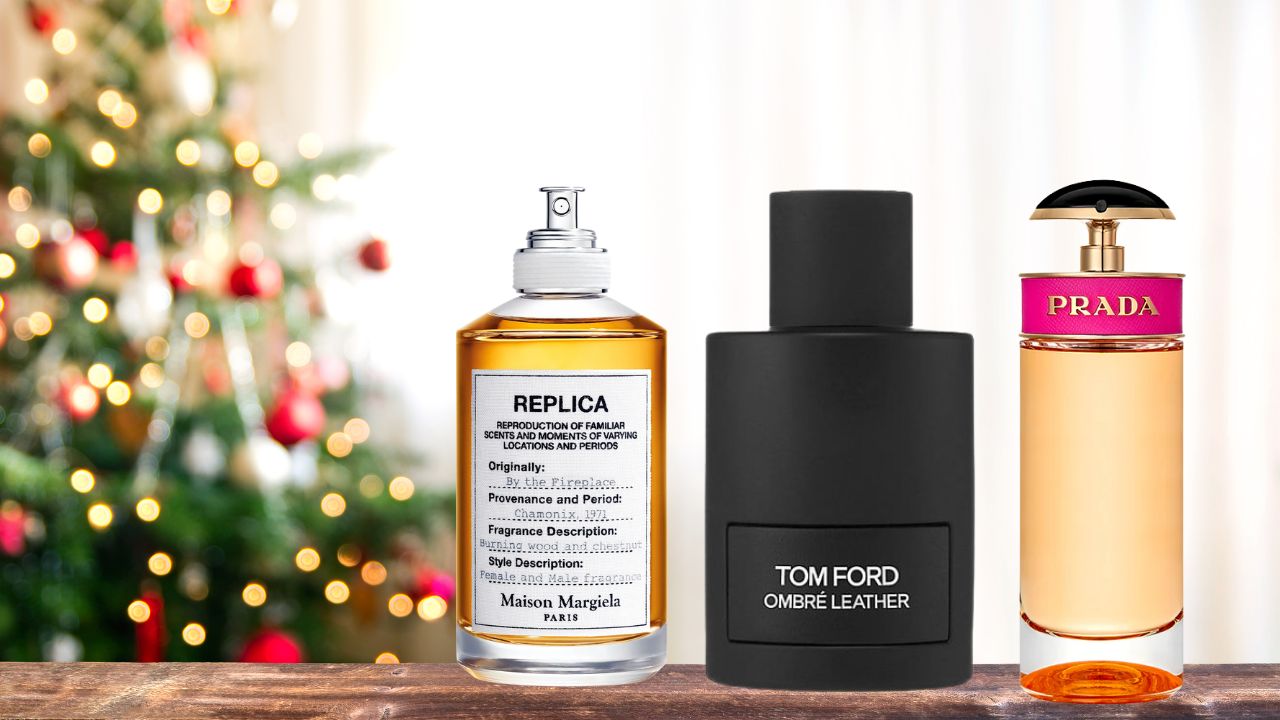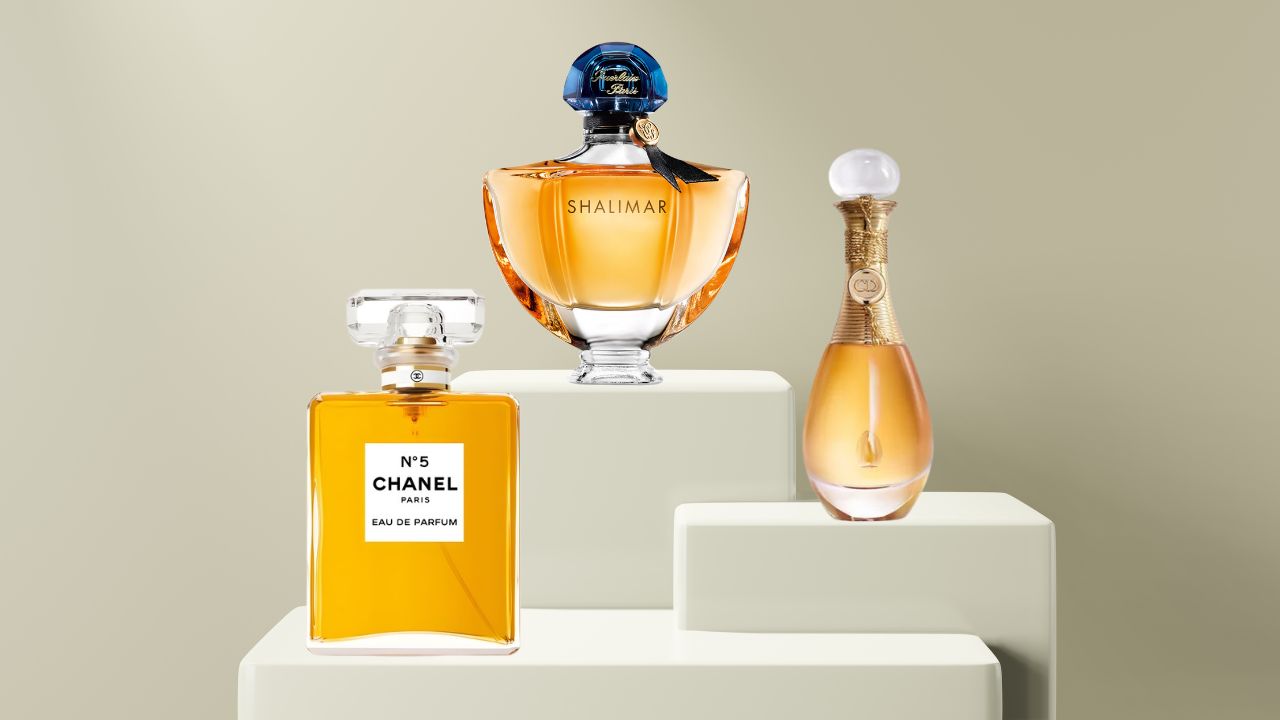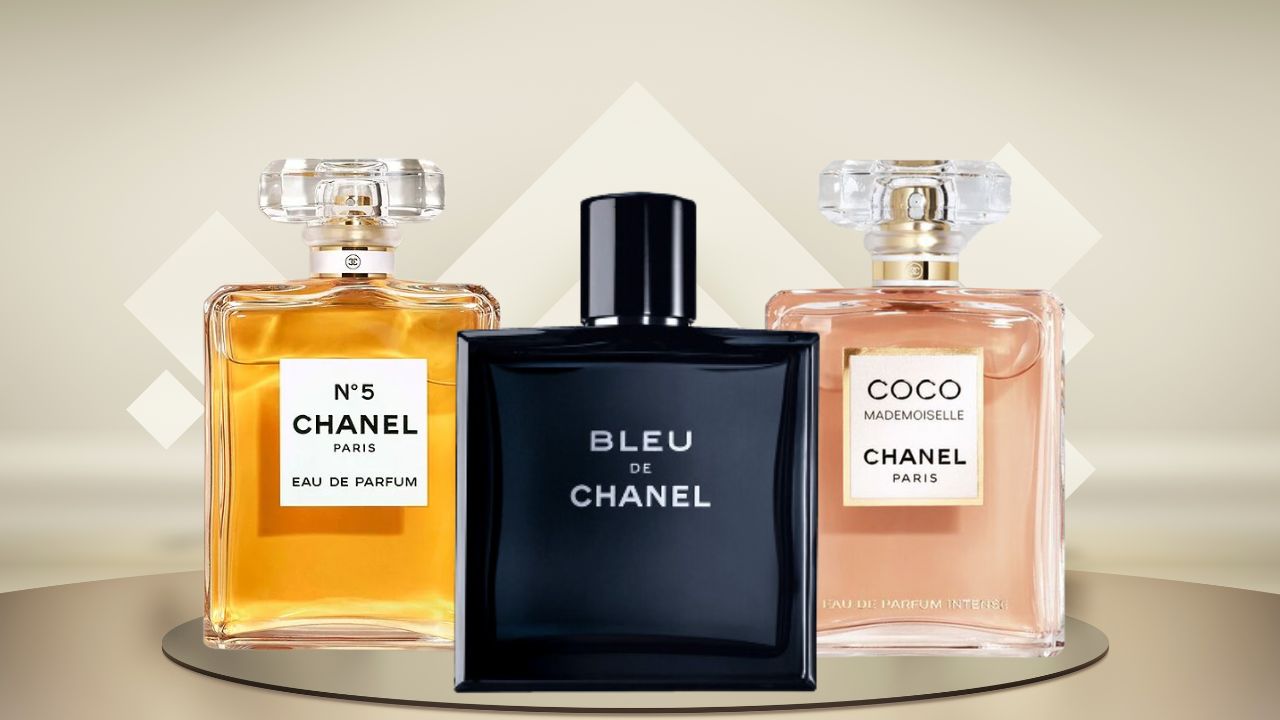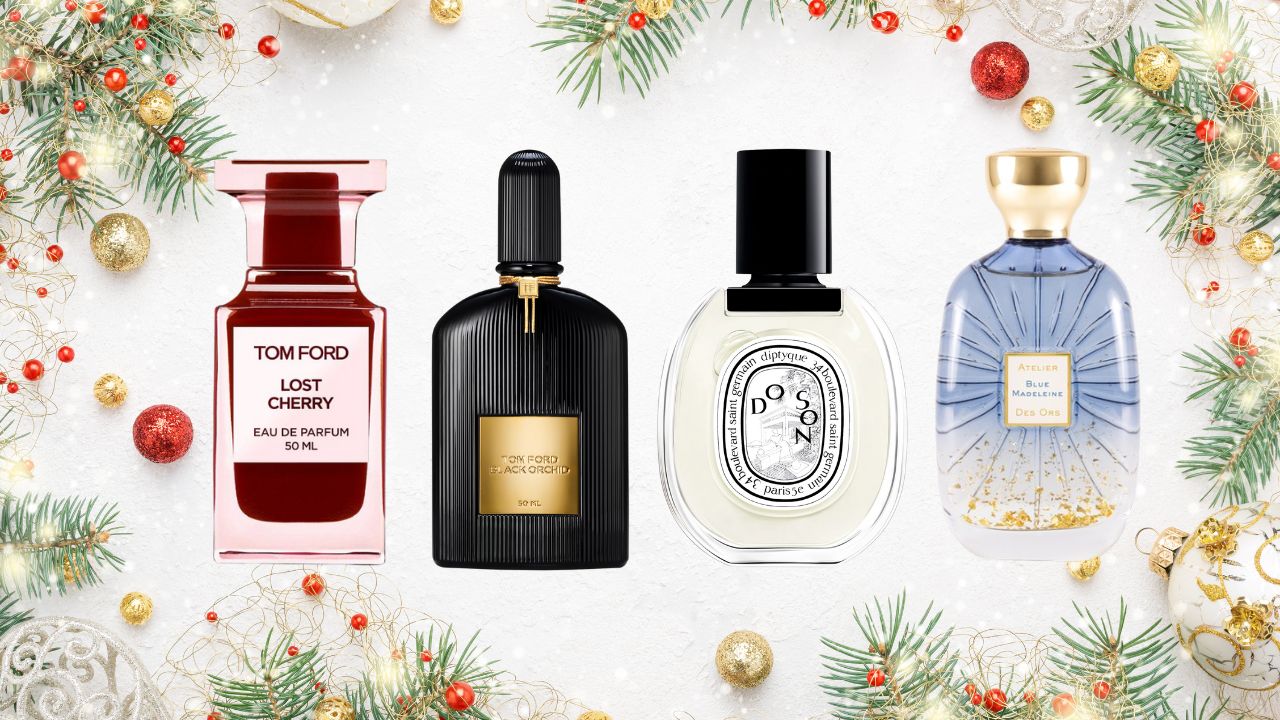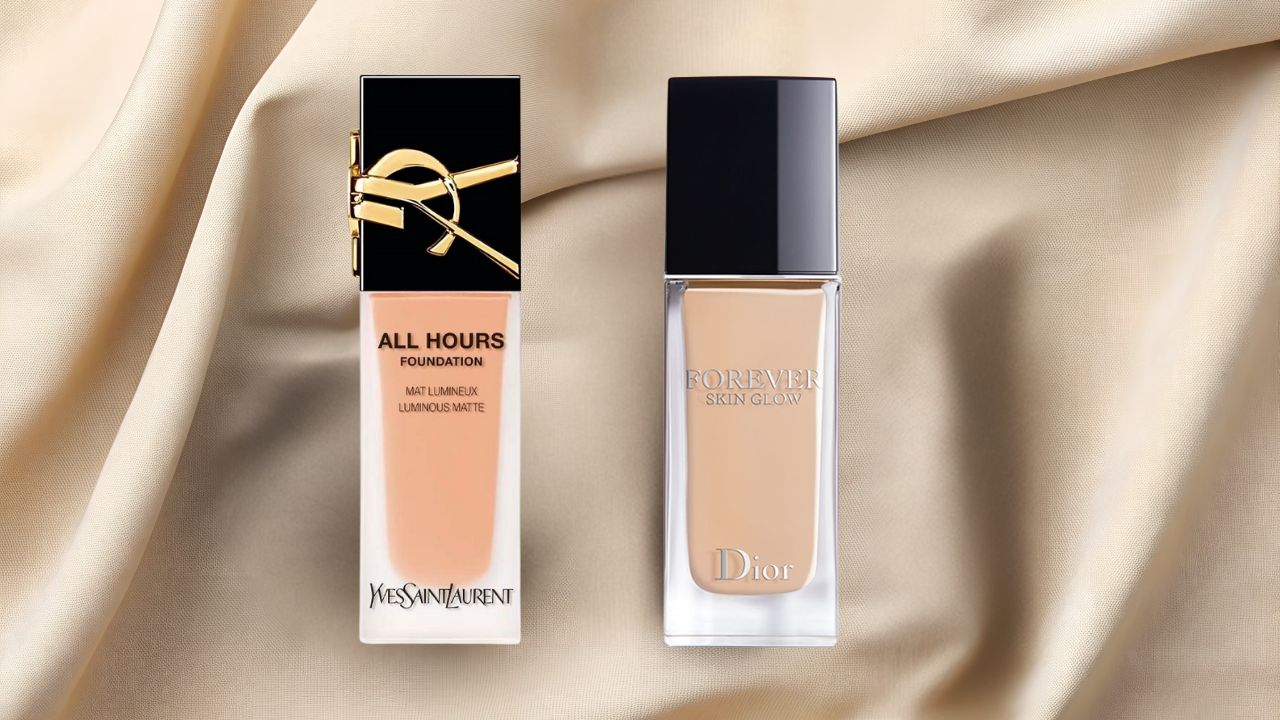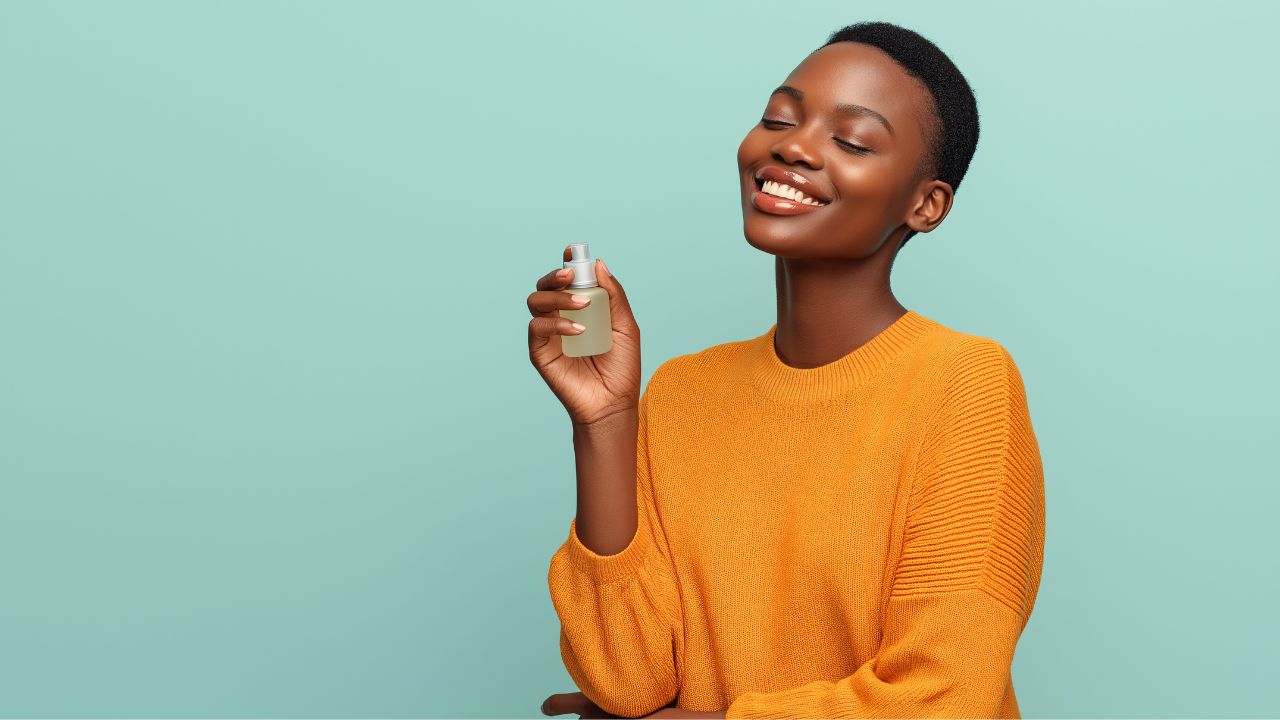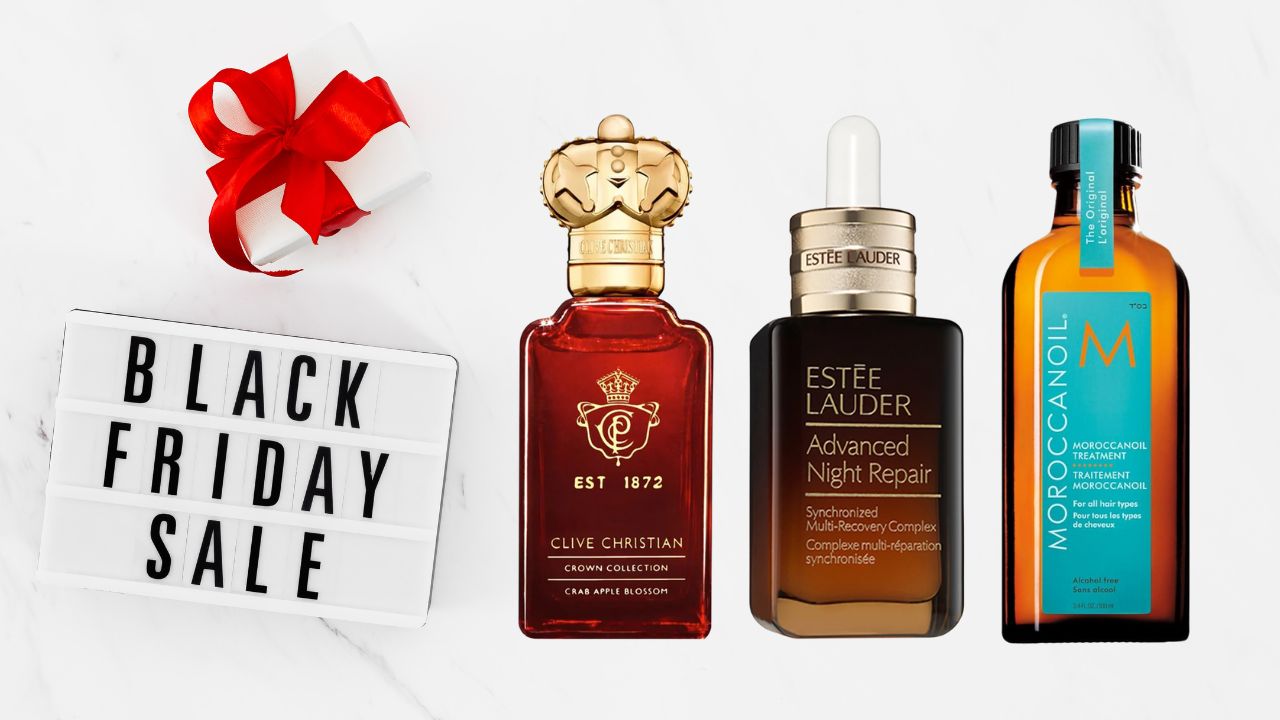Blog
Home / Perfume Stories / Eau de Parfum vs Eau de Toilette vs Parfum vs Eau de Cologne: What’s the Real Difference?
Categories
Recent Posts
- Christmas Makeup Ideas: Your Guide to Festive Glamour That Actually Works
- Perfumes That Smell Like Christmas: Your Guide to Festive Fragrance Magic
- Perfume for Sensitive Skin That Won’t Cause Allergies: The Essential Guide to Scent Without Irritation
- 10 of the Classic Perfumes That Never Go Out of Style: The Timeless Fragrances That Define Elegance
- Perfumes with the Most Beautiful Bottles: Where Art Meets Olfactory Excellence
Eau de Parfum vs Eau de Toilette vs Parfum vs Eau de Cologne: What’s the Real Difference?
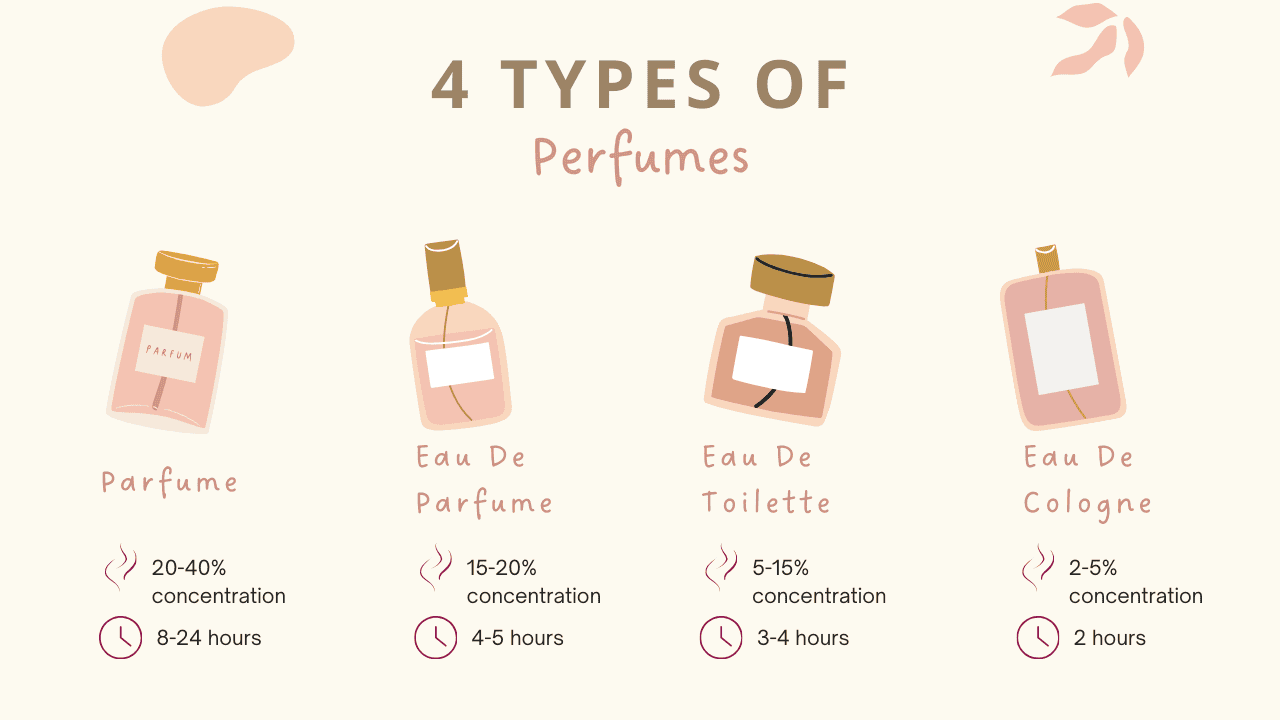
When buying a new perfume, you’ve probably noticed different labels: Eau de Parfum (EDP), Eau de Toilette (EDT), Parfum (Extrait), or Eau de Cologne (EDC).
But what do they really mean — and which one lasts the longest? Let’s break it down clearly.
Quick Comparison Table
| Type | Concentration | Longevity | Intensity | Price Range | Ideal For |
|---|---|---|---|---|---|
| Parfum (Extrait) | 20–30% | 8–12 hours | Very strong | 💎💎💎 | Special occasions, winter |
| Eau de Parfum (EDP) | 15–20% | 4–8 hours | Strong | 💎💎 | Daily wear, evening |
| Eau de Toilette (EDT) | 5–15% | 2–5 hours | Moderate | 💎 | Daytime, office |
| Eau de Cologne (EDC) | 2–5% | 1–3 hours | Light | 💎 | Summer, quick refresh |

The Science Behind Fragrance Concentration
Each fragrance type refers to the percentage of aromatic oils mixed with alcohol and water.
The higher the oil concentration, the stronger and longer-lasting the scent.
- Parfum (Extrait): Contains the highest concentration (20–30%). It’s rich, luxurious, and often used sparingly on pulse points.
- Eau de Parfum (EDP): Slightly lighter, around 15–20%, but still powerful. Most designer perfumes fall in this category.
- Eau de Toilette (EDT): Fresher, lighter, and more volatile. Great for daytime or warmer climates.
- Eau de Cologne (EDC): The most diluted, around 2–5%. Refreshing but short-lived.
Eau de Parfum vs Eau de Toilette
Main difference: Eau de Parfum lasts longer and smells stronger than Eau de Toilette.
Eau de Parfum (EDP):
- 15–20% oil concentration
- Lingers for 4–8 hours
- Richer and warmer scent trail
- Ideal for evening or cooler weather
Eau de Toilette (EDT):
- 5–15% oil concentration
- Lasts about 2–5 hours
- Feels fresher, more casual
- Great for daily or summer use
Beautinow Tip:
If you love a perfume, try both EDP and EDT versions. For example, Dior Sauvage EDP is deeper and longer-lasting, while Sauvage EDT feels brighter and lighter. And if would like to have longer lasting perfumes, you can check our perfume brands like Amouage, Xerjoff, Kilian Paris, Parfums de Marly and more.
Eau de Parfum vs Parfum (Extrait)
Main difference: Parfum (also called extrait de parfum) has a higher concentration and a richer, longer-lasting scent.
| Feature | Parfum | Eau de Parfum |
|---|---|---|
| Concentration | 20–30% | 15–20% |
| Longevity | 8–12 hrs | 4–8 hrs |
| Strength | Intense | Strong |
| Texture | Oily, dense | Lighter, more diffusive |
| Price | 💎💎💎 | 💎💎 |
When to choose:
- Choose Parfum if you want maximum depth and minimal reapplication.
- Choose Eau de Parfum if you prefer something more wearable for daily use.
Eau de Toilette vs Parfum
This comparison highlights the biggest contrast in perfume strength.
| Feature | Eau de Toilette | Parfum |
|---|---|---|
| Concentration | 5–15% | 20–30% |
| Longevity | 2–5 hrs | 8–12 hrs |
| Character | Fresh, airy | Rich, deep |
| Best for | Everyday, summer | Formal, evening |
Eau de Toilette vs Parfum
This comparison highlights the biggest contrast in perfume strength.
| Feature | Eau de Toilette | Parfum |
|---|---|---|
| Concentration | 5–15% | 20–30% |
| Longevity | 2–5 hrs | 8–12 hrs |
| Character | Fresh, airy | Rich, deep |
| Best for | Everyday, summer | Formal, evening |
Eau de Cologne – the Lightest Option
Eau de Cologne (EDC) is the lightest and most refreshing form.
Originally from 18th-century Germany, it uses citrus oils and volatile notes.
- Concentration: 2–5%
- Longevity: 1–3 hours
- Perfect for quick refreshes or after showers
Application Tips for Each Concentration
How you apply fragrance impacts performance just as much as which concentration you choose. The same EDP can last four hours on one person and eight on another simply due to application method.
Pulse points work because of body heat. These areas—wrists, neck, behind ears, inner elbows, behind knees—have blood vessels close to the skin’s surface, creating warmth that helps diffuse fragrance molecules into the air around you. But there’s nuance here. Applying to all pulse points simultaneously creates redundancy; you’re better off choosing two or three strategic locations rather than coating yourself everywhere.
For Parfum and EDP, less is genuinely more. Two or three sprays maximum will provide better results than five or six. Overapplication of concentrated fragrances creates a harsh, unbalanced scent where the top notes overwhelm everything else. The fragrance needs space to breathe and develop properly. I’ve learned to apply EDP, wait ten minutes, then evaluate whether I need more. Usually, I don’t.
EDT and EDC tolerate more generous application because of their lighter concentration. Four to six sprays of EDT is perfectly acceptable, and you can apply to hair, clothing, and skin without concern. These lighter concentrations also layer well with matching body products—using a scented body lotion or oil under your EDT extends longevity while adding depth.
Never rub your wrists together after applying fragrance. This common habit actually crushes scent molecules and disrupts the fragrance’s carefully designed evolution. Just spray or dab, then let it dry naturally. The heat from your skin will activate the scent without mechanical disruption.
Moisturized skin holds fragrance better than dry skin. Apply an unscented lotion or oil before your fragrance, or use a matching scented body product if available. The moisture creates a base that captures and holds scent molecules, significantly extending wear time across all concentrations.
Clothing can extend fragrance longevity, but use caution. Spray from six to eight inches away to avoid staining, and test on an inconspicuous area first. Natural fibers like cotton and wool hold scent better than synthetics. Keep in mind that fragrance on fabric doesn’t evolve the way it does on skin—you lose that personal, warming quality that makes fragrance feel intimate and unique to you.
Storing Fragrances to Maintain Quality
Even expensive Parfums lose their magic when stored improperly. Fragrance is chemically unstable, vulnerable to degradation from heat, light, and air exposure. Proper storage isn’t optional if you want your bottles to smell the same way months or years after purchase.
Heat is fragrance’s worst enemy. Never store perfume in bathrooms, despite how convenient it seems. The temperature fluctuations and humidity from showers accelerate deterioration. Window sills and dressers near radiators are equally problematic. Instead, store fragrances in bedroom closets, drawers, or cool, dark cabinets where temperature remains relatively constant. Some collectors use wine fridges for long-term storage of valuable or rarely-worn fragrances.ve the way it does on skin—you lose that personal, warming quality that makes fragrance feel intimate and unique to you.
Storing Fragrances to Maintain Quality
Even expensive Parfums lose their magic when stored improperly. Fragrance is chemically unstable, vulnerable to degradation from heat, light, and air exposure. Proper storage isn’t optional if you want your bottles to smell the same way months or years after purchase.
Heat is fragrance’s worst enemy. Never store perfume in bathrooms, despite how convenient it seems. The temperature fluctuations and humidity from showers accelerate deterioration. Window sills and dressers near radiators are equally problematic. Instead, store fragrances in bedroom closets, drawers, or cool, dark cabinets where temperature remains relatively constant. Some collectors use wine fridges for long-term storage of valuable or rarely-worn fragrances.
Light exposure, particularly UV light, breaks down fragrance molecules over time. This is why quality fragrances come in dark or opaque bottles—the glass itself provides protection. If you’ve removed the perfume from its original box for display purposes, you’re exposing it to unnecessary light damage. Keep boxes and store opened bottles inside them. Your collection might look less impressive on a vanity, but it’ll smell correct for far longer.
Air is the silent killer of fragrance. Every time you open a bottle, oxygen enters and begins oxidizing the fragrance compounds. This is unavoidable, but you can minimize it by keeping caps tightly secured and avoiding repeated opening just to smell the bottle. For very expensive or rare fragrances, consider decanting a small amount into a travel atomizer for daily use while keeping the main bottle sealed.
Fragrance doesn’t last forever. Even perfectly stored, most fragrances begin noticeably changing after three to five years. Higher concentrations with more oils (Parfum, EDP) generally last longer than lighter concentrations (EDT, EDC) because there’s less alcohol to evaporate. Signs of degradation include color darkening, scent turning sour or vinegary, and separation of liquid components. Once these appear, it’s time to let that bottle go.
If you’re a serious collector with bottles you won’t finish quickly, refrigeration actually works. Just allow the bottle to return to room temperature before applying—cold fragrance doesn’t project well. This technique is particularly useful for preserving vintage fragrances or discontinued scents you’re trying to make last as long as possible.
Common Misconceptions That Lead to Bad Purchases
The fragrance industry thrives on mystique, but that mystique has spawned numerous myths that lead to poor buying decisions. Let me clear up some persistent misconceptions based on actual fragrance chemistry and real-world testing.
The name “cologne” doesn’t indicate gender. Eau de Cologne is a concentration level, not a men’s fragrance category. The association between “cologne” and masculinity is pure marketing from the mid-20th century. Plenty of women wear EDC, and plenty of men wear EDP or Parfum. Any fragrance at any concentration can be worn by anyone. The only thing that matters is whether you enjoy how it smells on your skin.
EDT is not weaker than EDC, despite the confusing name. Eau de Toilette contains more perfume oil (5-15%) than Eau de Cologne (2-5%), making it objectively stronger and longer-lasting. The hierarchy from weakest to strongest is: EDC, EDT, EDP, Parfum. Don’t let the word “cologne” fool you into thinking it’s stronger than “toilette.”
Expensive doesn’t always mean longer-lasting or higher quality. Price reflects brand prestige, packaging, marketing costs, ingredient sourcing, and yes, sometimes concentration and quality. But a well-formulated EDT from a skilled perfumer can outperform a poorly made EDP from a luxury house coasting on name recognition. Concentration matters, but so does formulation skill. Some of the longest-lasting fragrances I own were relatively affordable EDPs from niche houses, while some expensive Parfums disappeared quickly.
You don’t need to match concentration to time of day. There’s no rule saying EDT is for daytime and EDP for evening. I wear Parfum to my office and EDT to formal dinners, depending entirely on the specific fragrance and weather. Choose concentration based on longevity needs, weather, and the fragrance’s character, not arbitrary social conventions about when different concentrations are “appropriate.”
The same fragrance name in different concentrations might smell meaningfully different. Perfumers often reformulate between EDT and EDP versions, adjusting the ratios of top, middle, and base notes to account for the different concentrations. Sometimes an EDT emphasizes fresh, bright notes while the EDP version of the “same” fragrance leans richer and warmer. Always sample both concentrations before assuming they’re identical except for longevity.
Finding Your Perfect Fragrance Match
Mastering fragrance concentrations isn’t just about smelling good—it’s transformative when you understand the science behind fragrance oils and discover the perfect concentration balance that works harmoniously with your skin chemistry, lifestyle, and personal style. The days of choosing between longevity and wearability, or between luxury and practicality, are over thanks to the diverse range of concentrations that allow you to curate a fragrance wardrobe that delivers both performance and pleasure.
Remember that finding your perfect fragrance concentration is a journey of careful exploration and experimentation. What works beautifully for one person’s skin chemistry and daily routine may need adjustment for another’s unique climate, sensitivity levels, and occasion requirements. Start with samples, build your collection gradually, and don’t be afraid to adjust your choices based on how different concentrations perform on your skin over time.
While understanding the principles of fragrance concentrations is essential, having access to authentic, high-quality fragrances ensures you can achieve the sophisticated, long-lasting results that make your scent selection truly transformative. With countless fragrance brands and concentration options available, finding trusted, effective perfumes that deliver both exceptional performance and beautiful scent development can feel overwhelming.
Discover your perfect fragrance collection at Beautinow – your trusted destination for authentic, professionally crafted fragrances that deliver luxury-quality results and help you master the art of scent selection that works beautifully with your unique style and fragrance goals.
Why choose Beautinow for your fragrance needs:
- Curated selection of authentic fragrances from trusted brands known for exceptional quality and artful concentration crafting
- High-performance fragrance options across all concentrations with proven longevity and sophisticated scent development
- Specialized collections for every occasion, from everyday EDT essentials to luxury parfum experiences
- Detailed concentration information and application guides for mastering fragrance selection and wearing techniques
- Expert fragrance advice and personalized recommendations based on your specific lifestyle, climate, and scent preferences
Your fragrance journey deserves the superior quality and expertly balanced concentrations that only come from professionally developed, master perfumer-crafted scents designed to perform beautifully while providing unforgettable olfactory experiences. Experience the difference that authentic, luxury-grade fragrances can make with Beautinow’s expertly curated collection of concentration essentials – including coveted favorites like Creed Aventus EDP, Tom Ford Oud Wood Parfum, and Chanel No. 5 Eau de Toilette for scents that transform your presence and confidence.
Frequently Asked Questions
Q: Can I layer different concentrations of the same fragrance together?
A: Absolutely! Layering different concentrations is an advanced technique that many fragrance enthusiasts use to create unique scent experiences and extend longevity. Try applying EDT as a base layer for freshness, then add EDP to pulse points for depth and staying power. You can also use EDC throughout the day for touch-ups over your EDP base. Start with light application and build gradually – the key is balance to avoid overwhelming yourself or others. This technique works especially well with linear fragrances that don’t change dramatically over time.
Q:Which lasts longer – Eau de Parfum or Eau de Toilette?
A: Eau de Parfum lasts longer because it contains more fragrance oils (15–20% vs 5–15%).
Q: Why does the same fragrance smell different in EDT versus EDP concentration?
A: Different concentrations can actually change how a fragrance smells, not just how long it lasts. Higher concentrations (EDP and Parfum) contain more fragrance oils, which allows perfumers to include more complex base notes and create richer, deeper scent profiles. EDT versions often emphasize top and middle notes more prominently since they need to make an immediate impact. Additionally, the higher alcohol content in EDT can make certain notes appear sharper or more volatile, while the lower alcohol in EDP allows for smoother, more rounded scent development. Your skin chemistry also interacts differently with various concentration levels, potentially highlighting different aspects of the same fragrance.
Q: Can I layer different types?
A: Absolutely. Start with an Eau de Toilette and finish with a matching Eau de Parfum for better projection.
Q: Is it worth buying multiple concentrations of my signature scent?
A: For your true signature scent, owning multiple concentrations can be incredibly valuable and cost-effective in the long run. Consider getting EDP for special occasions and evening wear when you want maximum impact and longevity, EDT for daily office wear and casual daytime activities, and possibly EDC for summer months or gym bag touch-ups. This strategy gives you versatility while staying true to your signature scent family. Many fragrance lovers find that different concentrations suit different moods and occasions, making their beloved scent feel fresh and appropriate in any situation. Start with your most-used concentration, then add others based on gaps in your routine.
Final Thoughts
Understanding the difference between Eau de Parfum, Eau de Toilette, Parfum, and Eau de Cologne helps you choose the right scent for your lifestyle.
Quick summary:
- Parfum → Deep, luxurious, longest lasting
- Eau de Parfum → Strong and versatile
- Eau de Toilette → Fresh, lighter, budget-friendly
- Eau de Cologne → Refreshing, short-lived
Whether you prefer subtle freshness or all-day intensity, you can find your perfect match at Beautinow.
Related posts
Christmas Makeup Ideas: Your Guide to Festive Glamour That Actually Works
Picture this: You're getting ready for the season's most anticipated gathering, and you're faced with the same tired holiday makeup dil...
Perfumes That Smell Like Christmas: Your Guide to Festive Fragrance Magic
There's something almost alchemical about the way certain fragrances can transport you instantly to a snow-dusted evening in December, ...
Perfume for Sensitive Skin That Won’t Cause Allergies: The Essential Guide to Scent Without Irritation
There's a particular kind of disappointment that comes with finding a fragrance you love, only to discover hours later that your skin h...
10 of the Classic Perfumes That Never Go Out of Style: The Timeless Fragrances That Define Elegance
In the hushed elegance of a Parisian boutique, where crystal flacons catch the afternoon light like precious jewels, something remarkab...
Perfumes with the Most Beautiful Bottles: Where Art Meets Olfactory Excellence
In a world where first impressions are everything, the bottle sitting on your vanity speaks volumes before you've even spritzed a singl...
10 Best Chanel Perfumes: Timeless Elegance in Every Bottle
In the world of luxury fragrance, few names command the reverence and recognition that Chanel does. Picture this: it's 1921, and Gabrie...
The 10 Best Women’s Perfumes for Xmas Gifts: Luxury Fragrance Gift Guide 2025
Choosing the perfect women's perfume for Xmas gifts requires more than walking into a store and picking the prettiest bottle. The right...
Dior Foundation vs YSL Foundation: The Ultimate 2025 Comparison Guide
Standing in front of the luxury foundation counter, you're faced with a decision that's both exciting and overwhelming. Two beautiful b...
Why Certain Smells Bring Back Memories: The Proust Effect Explained (2025)
The scent of fresh-cut grass transported me instantly to summer afternoons at my grandfather's farm. I was standing in a city park, yet...
How Perfumes Can Change Your Mood: The Science Behind Scent and Emotions
Have you ever noticed how a single whiff of perfume can instantly transport you back in time or shift your emotional state? Perhaps the...
Best Affordable Perfumes of 2025: Budget Fragrances That Smell Expensive
Finding a signature scent shouldn't mean emptying your wallet. The perfume industry has fundamentally changed over the past few years, ...
Luxury Beauty Gifts to Grab on Black Friday 2025: The Ultimate Guide to Premium Beauty Deals
Black Friday 2025 is your golden opportunity to invest in luxury beauty products that rarely see discounts throughout the year. From pr...
Comments



